Did you know the Japanese built a GTO?
It wasn’t in 1964 – and it didn’t have had three deuces and a four-speed. Or a 389. Instead, it had state-of-art technology, including an available twin-turbocharged and intercooled 320 horsepower DOHC V6, viscous-coupled all-wheel-drive system, four-wheel-steering and an “active” aerodynamic wing affixed to its trunk.
But the end result was much the same: A car that knew how to get you into trouble – and had what it took to get you out of it, too.
The Japanese GTO was Mitsubishi’s 3000 GT coupe – renamed for the export (U.S.) market but still called GTO back home – in Japan.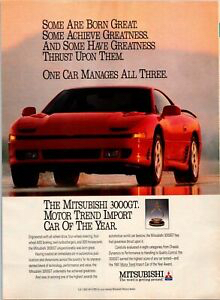
This sheetmetal Samurai arrived without prior warning – and seemingly out of nowhere.
There was no gradual evolution from meek to wild – as in the case, many years later, of Mitsubishi’s Lancer-based EVO all-wheel-drive rally sedan. Nor was there an existing, sort-of sporty coupe that got progressively tweaked for better and better performance, like Toyota’s Celica – which eventually became the Supra.
In 1989, Mitsubishi simply announced that the HSR concept showed earlier that year in Tokyo would become a production car the following year.
It was a bold move, undertaken for reasons very similar to the those that motivated Pontiac to produce the hopped-up Tempest created by engineer John Z. DeLorean in the early ’60s – and which became the now-famous Pontiac GTO. That car almost single-handledly transformed Pontiac from an old man’s brand to the muscle car brand of the ’60s.
Almost three decades later, Mitsubishi hoped to grab a slice of that same youth/performance market mojo.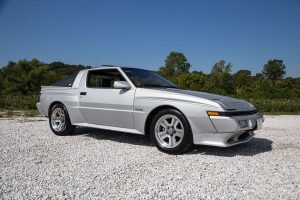
Some history:
Back in the mid-late 1980s, Mitsubishi was in much the same position that Pontiac was in the early 1960s: It was a smaller player in a market dominated by other brands like Honda and Toyota.
It was considered an economy car brand – the brand for people who couldn’t afford a Honda or a Toyota.
Like Pontiac two decades before, Mitsubishi management saw an opportunity to recast the company’s image as a sophisticated, upscale performance brand.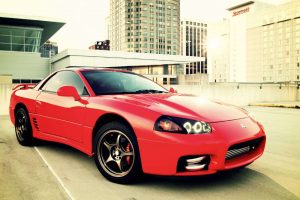
It began with models like the Starion, which bowed in 1982. This turbocharged, shovel-nosed coupe was one of the first Japanese cars sold in large numbers in America to feature 17-inch wheels and short-sidewall tires, a fully integrated IMSA-GT body kit (with bulging flares to cover up all that rubber) standard rear ABS – a rare feature in the early ’80s – and an optional limited slip axle. The Starion was a sharp-looking car that delivered excellent bang for the buck. It was also lighter and quicker off the line than heavier, V8 powered muscle coupes of the era such as Chevy’s Camaro Z-28 and Ford’s Mustang GT – and it got substantially better gas mileage out of its more efficient turbocharged four cylinder engine.
Competition versions did well, too – including multiple Sports Car Club of America (SCCA) wins for Team Mitsubishi. An AWD variant was even developed for Group B World Rally racing.
Another sign of things to come was a little-known sleeper version of the otherwise Janet Reno-looking Galant compact economy sedan.
This was a low-production “special” rarely seen outside of the home market -and it also packed a turbocharged engine. But unlike the production rear-wheel-drive Starion, the Galant VR-4 featured a viscous-coupled full-time AWD system and even rear-wheel steering – all of which would subsequently become trademark features of the 3000 GT VR-4.
But the key point of departure between these earlier Mitsubishi performance-oriented cars and the 3000 GT was the clean-sheet starting point. The GT was not a super-tuned or hot-rodded version of an already-in-production car that started life as an economy car, as in the case of the Galant. Nor was it done on the (relative) cheap, like the Starion – which traced its DNA back to the so-so Sapporo (marketed as a “captive import” under the Plymouth nameplate in the U.S.).
The Starion (and Galant VR-4) boasted some very impressive leading-edge technology and equipment for their time. But there was no way you could directly compare either with dedicated, designed-from-the-wheels-up performance cars of the era such as the Nissan 300ZX or Toyota’s Supra (by this time a separate model in its own right). Let alone the (then all-new) mid-engined, aluminum-bodied Acura NSX supercar.
With the 3000 GT, Mitsubishi was determined to build a machine that would rival the sophistication, technology and luxury of the world’s finest high-performance cars – with Porsche’s 911 Carerra S4 and the Acura NSX specifically in the crosshairs.
It was like Babe Ruth pointing to the grand stands – only it wasn’t (yet) Bab Ruth at the plate.
What Mitsubishi created out-tech’d and outperformed the 300ZX and Supra – and it would undercut the German and Japanese supercars on price, too.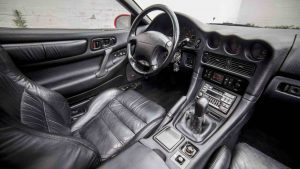
It sure looked like a home run.
The initial 1990 U.S.-spec. model stood a Lamborghini-like 50 inches off the ground (five inches lower than a Ford Mustang) which, combined with a very short wheelbase 97.2 inches) and widebody 72.4 inch track, gave it the squat of a track-ready machine.
The car’s visual seriousness was enhanced by the aero front-end treatment with pop-up headlights, Coke-bottle midsection and Ferrari-like way-out-there outside rearview mirrors.
On the trunklid, an “active” aero wing tilted up or down automatically to lessen wind resistance and increase downforce at high speeds; air scoops were cut into the lower bodywork. 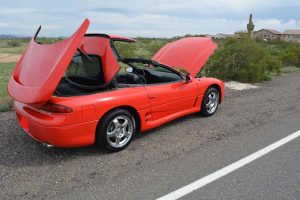
No disappointments awaited inside, either. A single-piece, molded dash enveloped the driver. The main cluster housed an oversized speedometer and tach, with a triple cluster of deep-set secondary gauges were housed in a hooded pod that canted inward toward the driver. One of these was the all-important boost gauge.
An upwelling center console divided the passenger compartment and added to the road-racer ambiance – while also giving the driver a perfect place to rest his right arm in between power-shifting the gears. A pull-up parking brake handle was handily mounted in just aft of the shift lever on the console’s left side – the ideal position for executing bootleg turns when the occasion demanded.
A driver-adjustable exhaust system that was in concept similar to the exhaust cut-outs that Pontiac offered with the early GTO was optionally available.
These formed the essentials of the 3000 GT, which could be ordered in one of three different trim levels: Base, touring-oriented SL and, at the pinnacle, the VR-4.
Base and SL trims were front-wheel-drive and powered by a naturally aspirated SOHC 3.0 liter V6 with the buyer’s choice of five speed stick or automatic.
With 222 hp on tap, it was already much more powerful than the company’s previous hottest shoe, the turbocharged Eclipse – and closely matched domestic brand performance car rivals of the period, such as Ford’s Mustang GT. In fact, the early ’90s Mustang GT’s much larger 5.0 liter V8 barely outgunned the Mitsubishi V6, despite having the advantage of nearly two more liters’ worth of displacement (and packing two more cylinders).
But the Big Kahuna was, of course, the VR-4.
The VR-4 package centered around twin sequentially staged turbos, a sophisticated full-time all-wheel-drive system, available active rear steering and aerodynamics – along with much more aggressive suspension tuning and mandatory six speed manual transmission.
You could not buy an automatic transmission in the VR-4.
With by now 320 on tap, the VR-4 was capable of high four second 0-60 runs and had a top speed close to 160 mph.
That was – and still is – serious speed.
(This writer took a ’96 VR-4 press car to an indicated 167 mph before backing off the gas; the car wasn’t done – and could have gone faster.)
A defining characteristic of the VR-4 was the audible whistle coming from under the hood as the turbos spooled up – and the associated menacing sound of the wastegate dumping open as the atmospheres crested at around 14 psi of boost. Unlike most modern car manufacturers, who work hard to mask the presence of turbochargers, Mitsubishi wanted everyone to know.
A VR-4 could dispose of cars like the Mustang GT in a straight line drag race like an MM fighter dropping a belligerent bar thug. And the AWD setup gave the car lateral (and wet weather) grip a Corvette couldn’t match.
There was nothing else quite like it on the road.
So why did it fail?
There are two main reasons – and they had a synergistic effect that ultimately lead to the car’s cancellation: Price – and complexity.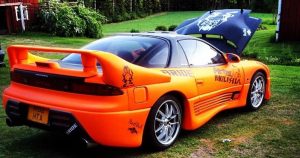
The 3000 GT was an expensive ride compared with other performance cars available at the time.
Even the base model – without the twin turbos or the all-wheel-drive – had a window sticker close to $20,000. This was back in the early 1990s, too – when just over $10,000 could buy you a base model Mustang or Camaro. And about $20k (the price of the base V6 3000 GT, without the VR-4) could buy you a top-of-the-line, V8 powered Mustang GT or Camaro Z28.
The exotic VR-4, meanwhile, carried an equally exotic MSRP – $31,400 in 1991. By the mid-late 1990s, the VR-4 was stickering out close to $40,000 – over $40,000 for a loaded one.
In circa 2021 dollars, that is equivalent to nearly $70,000.
The only thing close to this in cost – at the time – and other than exotics – was Nissan’s 300ZX, which actually cost more ($28,175 for a base model in ’91).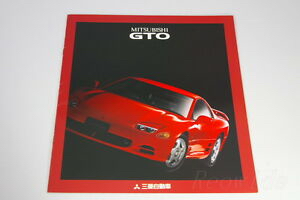
And it, too, would end up doing the Luca Brasi – and sleeping with the fishes.
Still, the 3000GT’s price was arguably justifiable – if you went by the stat sheet and features.
It was a much more sophisticated car than the relatively basic, even crude in comparison Mustang or Camaro – with their 1960s technology solid axle suspensions, decades-old pushrod, two-valve V8s and rear-wheel-drive. Japanese rivals such as the Supra and 300ZX didn’t even offer all-wheel-drive, let alone all-wheel steering.
The only thing comparable, on a features-for-features basis, was the Porsche 911 – which started at $60k, twice the cost of a ’91 3000GT VR-4.
The problem, of course, was that a Mitsubishi isn’t a Porsche, even when it has similar features and compares favorably in terms of its performance. People who buy Porsches weren’t (and still aren’t) interested in bargains. They’re interested in Porsches. Not just the car, either. It’s the history and status they covet as much as the raw capability.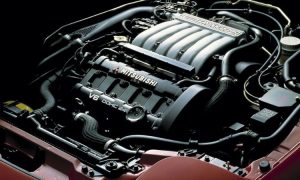
The 3000GT had the latter – but not the former.
On the other end of the scale, people who had a jones for Porsche-levels of performance and sophistication but had to stay on-budget found the VR-4’s pushing $40k MSRP too much to take on.
Chevy charged about the same for the Corvette, but like the Porsche 911, the ‘Vette had history and cachet on its side. The 3000 GT was a newcomer without a loyal buyer base or reputation, from a company that had yet to establish itself as a legitimate player in the field of high-performance sports cars.
The 3000 GT also fell victim to some early teething pains, including problems with the turbos, including a habit of spitting off the vacuum hoses that controlled the wastegates – and manual transmissions failed with alarming regularity under hard use, which these cars were ostensibly designed for. And maintenance costs were very high. The three-liter DOHC V6 was a “crasher” engine – meaning that if you failed to get the timing belt changed per the factory mileage interval recommendations and it failed while the engine was running, you could expect to be buying a brand-new replacement engine, not just a new timing belt.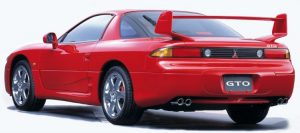
If it were available today, the 3000 GT would not stand out as especially radical. Many modern cars feature turbos, AWD – and even more sophisticated (and complicated) electronics. But in the early-mid ’90s, the 3000 GT was one of the most complex, difficult to work on and expensive to fix new cars you could buy. A high purchase price and the prospect of exotic-car maintenance costs no doubt scared off many prospective buyers.
It didn’t help, either, that Mitsubishi’s record for quality control was not the greatest back then. All of these factors helped push down resale values of used 3000 GTs. That, in turn, made it harder to sell new 3000 GTs – because financing costs were higher and both buyers and lenders weighing the purchase of a $30-$40k new car tend to be put off by the possibility that the car might only be worth half what it stickered for five years down the road.
The VR-4, in particular, never sold more than 4,853 examples in a single year (1992) and after this high water mark, they began to really slip. The next year (’93) a mere 2,550 VR-4s found homes – a drop of nearly 40 percent just two years after the car’s U.S. introduction.
By 1994, VR-4 sales had fallen yet again and by a similar percentage, down to just 1,263 cars.
Still, Mitsubishi gamely held on for longer than many observers expected – incorporating significant improvements to the 3000 GT as the ’90s rolled on, including standard sixteen-inch rims with low aspect ration 55-series performance tires for base model SLs in ’96 (and 18-inch rims with super-aggressive 40-series rubber for the VR-4), projector beam headlights up front and – also in ’96 – a new retractable hardtop option for both base 3000 GT and VR-4. At the time, no other car maker offered a retractable hardtop, not even Mercedes-Benz. (The SLK roadster was still a year away from its U.S. introduction.)
Unfortunately, the all-metal top also added even more complexity and cost – as well as added considerably to the 3000GT’s curb weight, which now approached a beefy 4,000 pounds.
These factors – high up-front cost relative to most competitors, down the road maintenance costs that were exotic-car expensive but without the exotic car brand cachet – ultimately led to the car’s cancellation as the new century dawned. During that final year, fewer than 300 total were sold – and of that number, fewer than 50 were VR-4s.
Total production during the 3000 GT’s approximate 10-year U.S. run was less than 75,000 cars.
Ford often sold that many Mustangs in a single year.
On paper, the 3000 GT seemed like a three-run homer.
On the streets, it was a killer.
But where it mattered most – the marketplace – it failed, because it was just too rich for the tastes of those who might have wanted to buy one – and not rich enough for the tastes of those who could afford to buy one.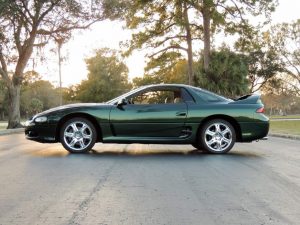
Still, it made a lasting impression on those lucky enough to get seat time in one back in the day.
Or even just saw one, in the flesh.
3000 GT facts:
The 3000 GT was also sold under the Dodge brand as the Stealth from 1991-1996. The Dodge-branded iteration was mechanically identical and cosmetically similar. It sat beside the then-new Viper in showrooms, ultimately being retired in favor of the Viper – which became Dodge’s “halo” car.
The GT 3000’s available retractable hardtop was the first such offered in a production car since the 1959 Ford Skyliner. All of the 3000 GTs that became retractable hardtops left the factory in Nagoya, Japan as hardtops; conversion work was done by ASC.
A Dodge Stealth was scheduled to pace the 1991 Indy 500 but this was kiboshed due to objections about the car’s Japanese origins. Traditionally, only American-made cars have paced this race.
3000 GTs sold in Europe were slightly different than the U.S.-spec model, including being fitted with higher-capacity turbochargers. Supposedly this was done for durability rather than higher-performance and the advertised horsepower was the same for both versions.
In 1994, Mitsubishi offered a home-market-only Mitsubishi Racing (MR) version of the 3000 GT, which was lightened up several hundred pounds vs. a regular production model. The MR deleted the weight-adding four-wheel-steering as well as ABS and the “active” front and rear spoilers (and the motors that operated them).
. . .
Excerpted from the almost-here book, Doomed: Good Cars Gone Wrong!
. . .
Got a question about cars, Libertarian politics – or anything else? Click on the “ask Eric” link and send ’em in!
If you like what you’ve found here please consider supporting EPautos.
We depend on you to keep the wheels turning!
Our donate button is here.
If you prefer not to use PayPal, our mailing address is:
EPautos
721 Hummingbird Lane SE
Copper Hill, VA 24079
Also, we do accept Crypto. If you’d like to donate that way, please email EPeters952@yahoo.com for details.
PS: Get an EPautos magnet or sticker or coaster in return for a $20 or more one-time donation or a $10 or more monthly recurring donation. (Please be sure to tell us you want a magnet or sticker or coaster – and also, provide an address, so we know where to mail the thing!)
My eBook about car buying (new and used) is also available for your favorite price – free! Click here. If that fails, email me at EPeters952@yahoo.com and I will send you a copy directly!


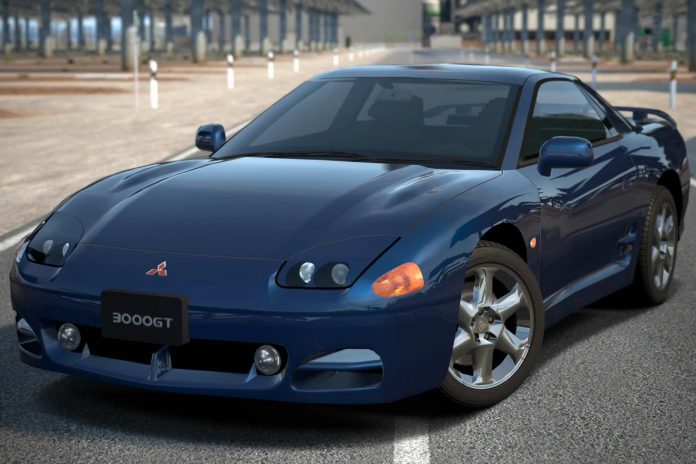

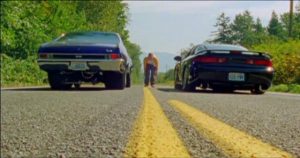







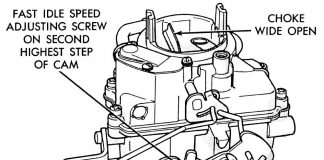
I worked at Napa in my late teens/early twenties doing deliveries and the owner of the place had a VR4. He let me take it out a few times. I got it up to 145 or so on the interstate once, and it got there in a hurry. Was a fun car to drive, wish I knew more about how to drive such a car back then, woulda been even more fun!
Hi Jordan,
Count yourself lucky! Very few got to experience one of these; you and I are among the lucky cohort. Another one I’ll never forget is the ’95 Mustang Cobra R I took up to NYC that summer. Brand-new press car and the city was still New York. It’s how I like to remember it.
Automakers are rarely bold, especially today. (Going to electric is the opposite of bold)
Its too bad there is almost always one thing terribly wrong with a bold vehicle like this when they do one. Being too expensive (and the quality problems that still mar that brand).
Roads are littered with cars like this: the Corvair, the Fiero and the too late to the party Avanti.
Large companies are pretty bad at bold.
I wanted a Starion some kind of bad back in the day . But as a broke kid making 5 bucks an hour I settled for a claped out 73 240 Z. That I fixed up drove the shite out of it then got a way nicer 240 Z…..Wish I still had it.
Me too. And I went clapped out 280zx, worse. started making money and got the first gen Honda CR-X. great car until i center punched a pole and relegated myself back to a 70’s civic stripper.
We were all experimenting with FWD back then and I learned the hard way that they did not handle like a RWD.
Sorry about the CR-X great cars… When I started to make some money in the 90s I got a 3rd gen Supra..That was a great car…but living on a dirt road …it just drove me crazy trying to keep it nice…sold it got a 4×4 truck instead…..mud and dust looks natural on a truck. Now the closest thing I have to sports car is a Subaru.
My buddy back in the day got his CPA and fancy job working for one of the big 8 account firms in SF, he celebrated by buying an early Mitsu Starion, black on black with turbo. That car could haul ass as I recall. However he never had the time to enjoy it as he was low man on the corporate totem pole counting rich people’s money and taxes until he had enough and quit.
(Then went to law school/state bar and defending other rich peoples money…then quit.)
Went to Six Flags on Sunday and someone drove their Starion – beautiful red and well maintained. I hadn’t seen one of those since a friend’s lead-footed dad sold his Conquest TSi in the 80s.
Hi Michael,
I haven’t seen a Starion in years; as a kid, I always thought they looked really sharp and have wanted to drive one ever since then. I would love to be able to do test drives/reviews of old stuff – but Satan hasn’t been returning my calls…
One day I’ll get a VR4, and tackle the weak links before mildly building it up to be a fun weekend car.
They are beautiful, would love to get a clean one, but first I gotta lay down the groundwork. Also gotta find who specializes in working and maintaining them in my area.
Amen, Zane –
I vividly remember winding one out to 160-plus on I-66, back in the day. These things moved.
and in ’21/22, there’s enough of a community and support out there to fix said issues while saying xxx is the acceptable hp before shit breaks, no matter how reinforced it is.
Always used them in Cruisin’ games at the local arcade and on my N64, so has a special place in my heart due to that. If not that, see which more reliable engine swaps in and maintains a lot of the functions while still offering the power needed to have fun